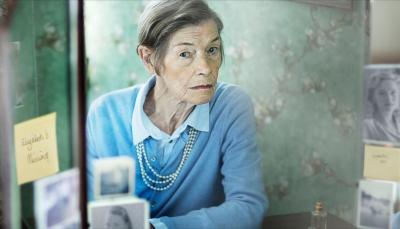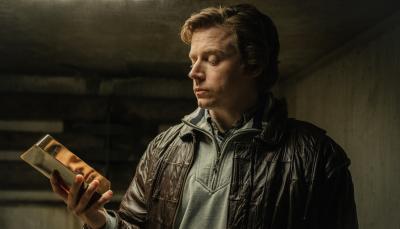Classics Revisited: 'Elizabeth R' (1972)
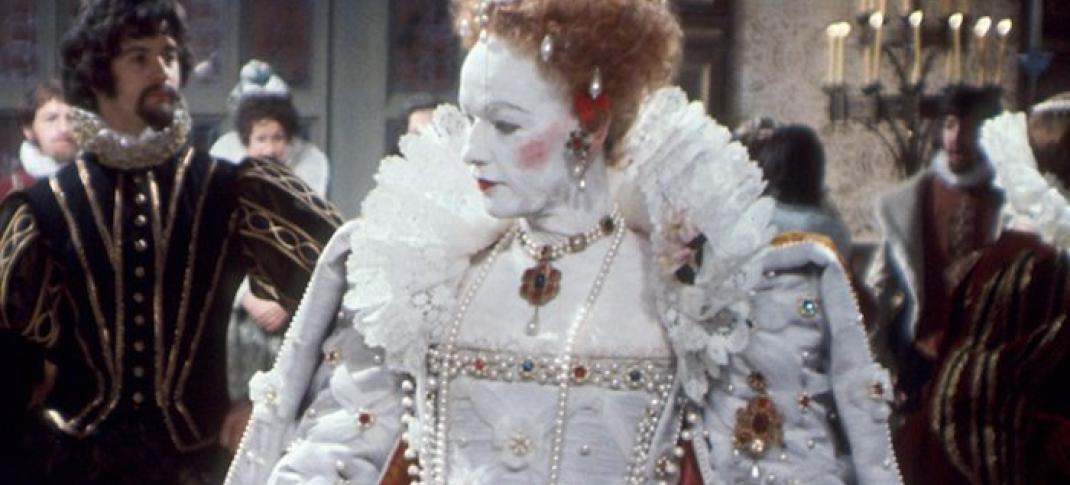
For weeks British viewers had been glued to their screens for new episodes of The Six Wives of Henry VIII, and period drama Elizabeth R was developed to both build on its popularity and finish telling the story of the Tudors, leading eventually to many, many offshoots of the good, bad, and indifferent variet. Happily, Elizabeth R was a brilliant collaborative effort between a team of writers (one per episode) and directors, and a huge cast of experienced, capable actors, a showcase of British talent. It’s available to stream now on BritBox. And it's certainly still worth watching, even half a century on.
This is television that requires concentration and commitment. Each of the six episodes lasts about 75 minutes and the series is full of characters who look somewhat alike (all those beards and ruffs) and whose faces have now been mostly forgotten. This is television viewing on an old-fashioned model, requiring attention from its audience in the long-ago epoch before repeats, recording, and streaming. It was so popular in the U.K. that the series was repeated immediately after its first run, and it also aired again last summer to celebrate its fiftieth anniversary. PBS broadcast it in 1972 and it was the first British show to win an Emmy. Star Glenda Jackson received Emmies for Best Actress in a Drama Series and Best Actress in a Movie/TV Special.
Jackson, born into a working-class family, received a scholarship to RADA (Royal Academy of Dramatic Arts), where she was told that with her unconventional features she could expect a career playing comic roles, and would probably not come into her own until she was forty. But she did go on to perform in repertory and with the Royal Shakespeare Company, and then made the shift to film with starring, award-winning roles in Ken Russell’s Women in Love (1969) and The Music Lovers (1970). So she was known as an artsy, unconventional actor, but was not yet a household name. The series required her to portray a fifteen-year-old in the first episode, until the Queen’s death at the age of 70 in the last. Jackson was in her mid thirties.
Elizabeth R was the BBC at its best. Everything was very thorough in those days. I was taught how to write Elizabeth’s signature, I was taught to ride side-saddle. I was even taught how to fire a bow and arrow...
--Interview with Glenda Jackson, The Daily Telegraph, 2003
The world of Elizabeth R is one of the conspiracies, cruelties, and a royal lineage that is barely established. Elizabeth is the daughter of Anne Boleyn, her sister Mary the child of Catherine of Aragon, and both have been branded as illegitimate at one time or another. Henry VIII’s only son Edward VI sought to establish the English Protestantism that began with the break from Rome during his brief reign. Mary succeeds him and is committed to restoring Roman Catholicism.
The series doesn’t present Mary, played convincingly by Daphne Slater, as a religious zealot. Rather, she is concerned for her half-sister’s soul while enraged by her evasion. For all of her reign, Elizabeth’s official strategy was to claim that she had no interest in men’s souls. Alternately banished to a country estate or summoned to court, Elizabeth is in real danger. At one point, Elizabeth is sent to the Tower of London, where her mother was imprisoned and executed, and her servants are threatened with torture. In a nice touch, the director got permission to have the Traitor’s Gate (the real-life river entrance to the Tower) opened for the first time in a century to film her arrival.
Assassination attempts, foreign interference, and rebellions have made the country unstable. Elizabeth navigates a sea of advisors and sycophants in a culture that refuses to admit that a woman––even if she is God’s anointed––can be strong, intelligent, and decisive. She plays on male conceptions of weak, feeble women, always guarding her secrets and revealing vulnerability only when it’s strategically important. She turns on a dime from bellowing rage to a honeyed sweetness.
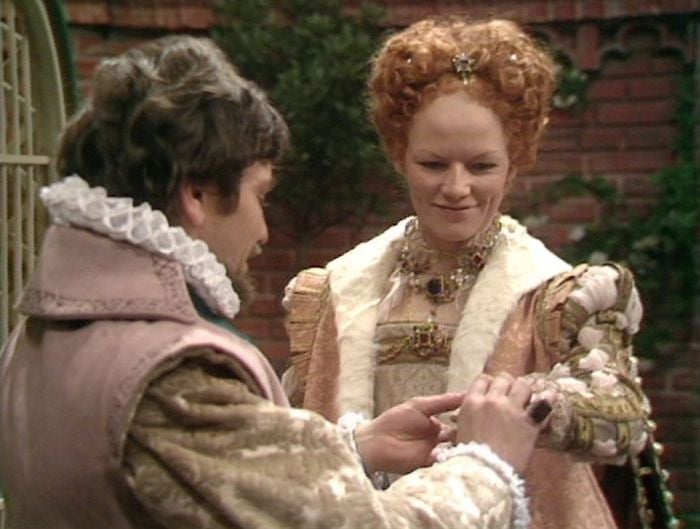
For the first few years of her reign the issue of succession, and therefore of marriage, is of paramount importance to her advisors, and with casual skill Elizabeth evades commitment. It doesn’t take her long to explore the shortlist of appropriate European suitors and find them lacking, among them Philip of Spain (Mary’s husband, a Roman Catholic, what were they thinking?) and the wacky French Duke of Alencon. She is determined to survive alone and trusts no one.
I have trusted no man since I was eight. First there is trust, then passion, then death.
She is not averse to a handsome face, though, and the series follows her decades-long relationship with the dashing Robert Dudley, Earl of Leicester, here played by Robert Hardy (Siegfried in the original All Creatures Great and Small). They are delightfully flirty. We first meet him galloping around randomly on a horse, and for a modern audience this may be more reminiscent of Terry Gilliam and his coconuts than heroic derring-do. But otherwise, he’s superb, carrying off the somewhat daft Elizabethan fashions for men with great style.
In one terrific scene, he exits the throne room, walking backward and bowing at each step, clearly besotted with her. He’s the love of her life but we know she’ll never marry him. But he writers unwisely included a scene in which he asks Elizabeth to meet at a church to marry him, he doesn’t show up, and it doesn’t make any sense at all.
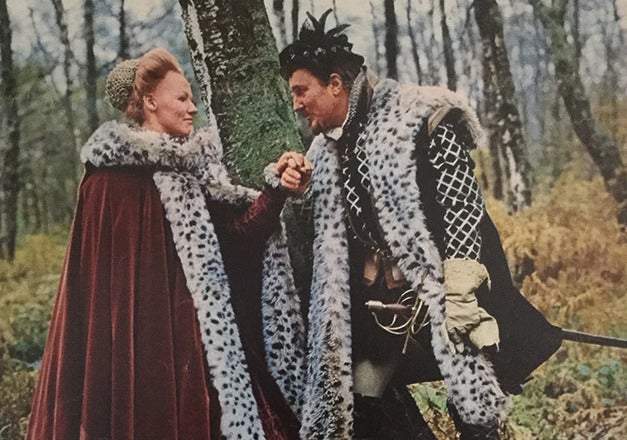
It’s a relationship that lasts for decades, with a huge amount of bad behavior from each to the other––Elizabeth insults him, he betrays her in ways small and heartbreaking, such as secretly marrying her ditzy cousin Lettice Knollys (Angela Thorne, who went on to star in To the Manor Born).
Yet somehow, they remain allies and friends, mostly. There’s a touching scene toward the end of the series where the two old codgers compare notes on aging–– Elizabeth’s teeth, Dudley’s aches and pains. The brief scene where she hears of his death is understated and wrenching, a beautiful piece of acting, that will stay with you long after.
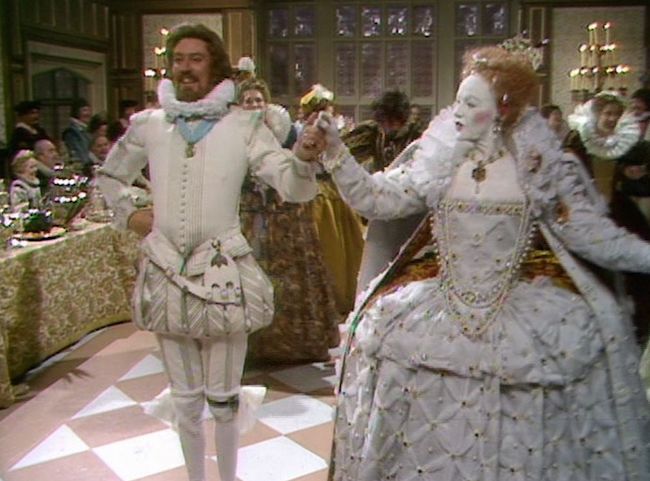
Elizabeth's later relationship with Robin Devereaux, Earl of Essex (Robin Ellis, the original Poldark), Dudley’s nephew, is even worse, with Essex clearly eyeing the throne. At this point she’s in the full white makeup and wig stage, flaunting the Gloriana legend. Let's face it, she liked pretty boys who were destined to let her down.
By the time the growing power of Mary, Queen of Scots (Vivian Pickles) becomes a crisis, Elizabeth is past childbearing age, but Mary has a son. Mary also has a lot of support from European allies as well as English Catholics. It’s a quandary for Elizabeth and even now we don’t know her true motives, or what she intended. She bickers with her advisors, the compelling argument being that no one can kill a monarch, but then chats about the weather as she signs a pile of documents which includes the death warrant.
When the news, inevitably, arrives that Mary is dead, she turns savagely on her advisors, claiming that although she had signed the document, she had not ordered the execution. This is a very dark moment in the series :
This is our common end ... picked clean by worms, flesh curdling with corruption, stinking like a blocked midden. So do not talk to me of peace and God’s good grace. Dying is a fearful process. I have known death since I was a child. I have stared long into his white unseeing eyes. I know of his dread cruelty. When you are lying on your last bed, remember my words. Cry out for mercy. Bite deep into your lips. And recall how you plotted my cousin’s most terrible end.
For once, this was a series historians admired. There was a lot it got right, and despite its low budget and the technical limitations of its time, nearly everything works.
The exterior shots were on location at sites associated with Elizabeth, and the interiors are studio sets. Details of paneling, plasterwork, and furniture look authentic, and the Tudor architecture of rooms opening onto each other, rather than branching off from a corridor, is used to great effect. The rooms endlessly opening from each other reinforce the themes of paranoia and fear that pervade the court.
This is particularly effective in the moving scene of Elizabeth’s death when the camera slowly moves away from the chair where the dead queen sits, and everyone in each room––nobles, clergy, servants, guards––fall to their knees.
For her performance in the six-part BBC television serial Elizabeth R (1971) Jackson did her due diligence by going through several biographies of the Queen. This research is on display in the final scene of the series: originally written with the dying Elizabeth clutching her sceptre, Jackson told the director “we can’t do this” and produced an account of the Queen sucking her thumb. In this moment of vulnerability, “the part came to together”.
--Interview with Gerard Corvin, 2016, Senses of Cinema
The costumes, enormously heavy and ornate outfits - some of which made movement or even standing difficult - were based on extant portraits.
Costume designer Elizabeth Waller won an Emmy for her work, and you can read more in this Frock Flicks article. In addition, Jackson’s makeup could take hours and included a prosthetic nose. She also shaved her hairline for that authentic Tudor look.
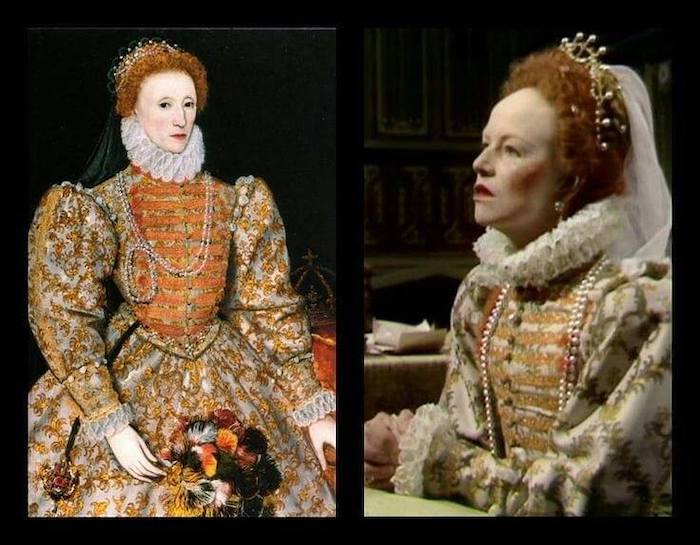
The only genuine disappointment I found was in the Spanish Armada scene where Elizabeth makes her famous speech at Tilbury on the eve of the battle. Since this series relied very heavily on the indoor atmosphere and crowded rooms, this scene makes you painfully aware of its budget restrictions. It’s a valiant attempt to suggest the moment without hundreds of extras and a location that offers the Thames Estuary. We have two soldiers exchanging Shakespearian quips about what’s going on, Elizabeth on a horse, the interior of a tent and distant cheers. Jackson delivers the speech with great conviction, but it's not enough.
However, the rest of Elizabeth R is so rewarding that I can't recommend it enough. Settle down for some dense, rich viewing, an immersion into history, and one of the best performances you'll ever see.
Glenda Jackson, by the way, did go into comedy slightly earlier than RADA predicted, following a guest performance with Morecambe and Wise as Cleopatra shortly after Elizabeth R aired, in which she also tap-danced. I like to think that she drew on Elizabeth I's steel and anger when she left acting in 1992 to serve in Parliament. Her heartfelt, passionate attack on Margaret Thatcher's values in the House of Commons is worth watching. Also significant, the first role she had after leaving politics was in the title role of King Lear. Recently, she starred in PBS's Elizabeth is Missing, courageous exploration of aging and loss.
Have you seen Elizabeth R recently, or long ago? What did you think? Have you seen other films Glenda Jackson made?


